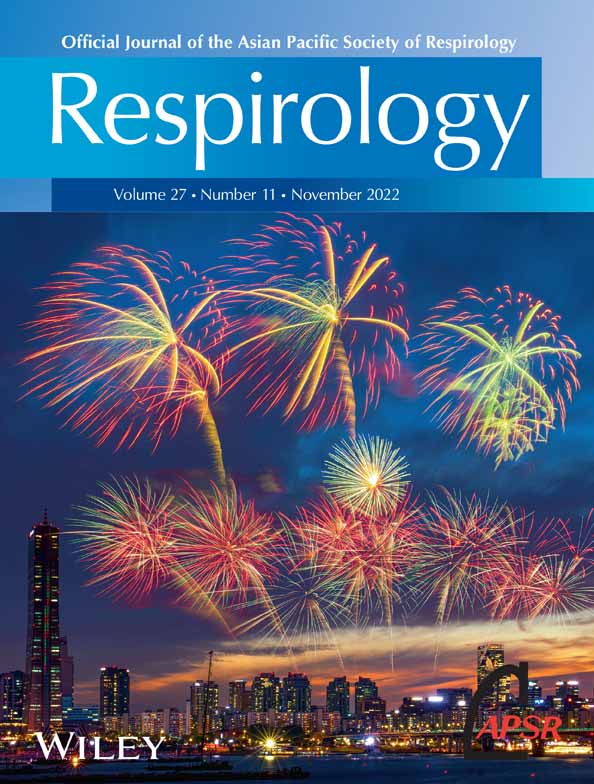A paediatric bronchoscopist's ‘Field of Dreams’: Will the flexible cryoprobe hit a home run?
See related: article
Abstract
See related article
Heeding the advice ‘if you build it, he will come’, Ray Kinsella (played by Kevin Costner in the 1989 movie ‘Field of Dreams’) literally bets his farm on constructing a baseball diamond on his cornfield, a feat that improbably saves his family from financial ruin. Since then, the phrase has been commonly employed in business circles, referencing implementation of an idea prior to securing a dependable consumer base. Similar parallels can be drawn with the evolution of flexible bronchoscopy in the paediatric population—specifically, the availability of new equipment driving its own utilization.
Historically, flexible bronchoscopy in the paediatric discipline has been largely limited to visual diagnosis, performance of simple diagnostic tests such as bronchoalveolar lavage, and rudimentary therapeutic manoeuvres such as suctioning.1 However, as bronchoscopic equipment has become smaller, allowing our adult colleagues to extend their diagnostic and therapeutic capabilities, the equipment has simultaneously become suitable for use in children. Consequently, paediatric practitioners have begun to define new indications for the procedure.2-5 One such device that has become increasingly popular among paediatric bronchoscopists in recent years is the flexible cryoprobe.
Although the flexible cryoprobe has been utilized in adult patients for a variety of clinical conditions including tumour debulking or devitalization since the 1990s,6 such conditions are rare in the paediatric population. As such, the device was considered to be of limited value for children and was rarely considered in their care. More importantly, early versions of the device were simply too large to use with paediatric bronchoscopes, which typically have channel diameters of 2.0 or 1.2 mm. However, 1.7 and 1.1 mm cryoprobes are now readily available, greatly facilitating their use in patients of practically all ages. While the literature specifically focusing on the use of the cryoprobe in children remains limited to case reports and small case series,7-9 paediatric pulmonology practitioners around the world have nevertheless begun to utilize the equipment for a variety of clinical scenarios that are more commonly encountered in children.
In a recent publication in Respirology, Schramm, Freitag, Kotz, et al. report their findings from a prospective survey that queried 10 institutions around the world on the use of the cryoprobe in paediatric patients.10 Their manuscript highlights some important themes and introduces questions relevant to contemporary paediatric bronchoscopy practice. First, this survey is the largest report on cryotherapy in the paediatric population to date, encompassing different procedures, various indications, and a wide spectrum of age. Although some of the measured parameters in this study are subjective, and its results vulnerable to recall and selection bias, the study nevertheless serves to document the potential efficacy of the techniques while also demonstrating a safety profile comparable to standard approaches. Because prospective controlled trials applying new procedural technology in children can be quite challenging, the authors should be commended on taking this initial step to educate the community at large regarding current utilization, despite the report's limitations.
Not to be overlooked in this report is the somewhat surprising number of paediatric pulmonologists (n = 40 for this survey) around the world who are actively employing cryotherapy techniques, particularly considering that formalized training does not currently exist. Furthermore, paediatric pulmonology training in the United States of America, unlike that in the adult world, is not coupled with critical care medicine, which might dampen some paediatric practitioners' enthusiasm or level of comfort with more invasive procedures, including management of complications. In this regard, it seems prudent to question whether such training should be made more readily available for paediatric bronchoscopists, and whether such procedures should be more routinely applied in practice or primarily performed in designated centres. Certainly, some procedures (cryoadhesion to remove clots/casts, biopsy) seem applicable to many paediatric pulmonary practitioners, while others (relief of benign or malignant airway obstruction, foreign body retrieval) may be applicable only in select institutions depending on expertise, scope of practice, and availability (or lack thereof) of other relevant subspecialty services.
In general, paediatric advanced diagnostic and interventional bronchoscopy, including but not limited to cryotherapy, has garnered recent attention in academic circles. In 2020, the Paediatric Assembly of the American Thoracic Society approved its first postgraduate course dedicated to the subject, which included a hands-on station. The course, which was postponed until 2022 due to the COVID-19 pandemic, encompassed a variety of techniques including cryotherapy, biopsy, and navigational bronchoscopy,11 and there are plans for similar forums at the European Respiratory Society meeting in coming years. Availability and sustainability of such formalized courses will be important in order to regularly review quality and safety data, define new indications, introduce new techniques, and acquire or maintain some level of knowledge and competency for those interested in the discipline. It remains to be determined whether training for some advanced techniques should be included in routine fellowship programmes, or whether additional training should be required.
For now, it seems plausible, even likely, that the use of the cryoprobe in paediatric pulmonology will only increase moving forward. Because of its potential utility in various clinical scenarios, its favourable safety profile, ready availability of paediatric-appropriate devices, relative ease for learning the techniques, and modest initial investment, the cryoprobe is primed to hit a home run for a more advanced scope of paediatric pulmonology practice in coming years. However, it will be our collective responsibility as bronchoscopists to ensure that the field moves forward in a safe and effective manner through ongoing education, research, and training.
CONFLICT OF INTEREST
None declared.
LINKED CONTENT
This publication is linked to a related article. To view this article, visit https://doi.org/10.1111/resp.14353




